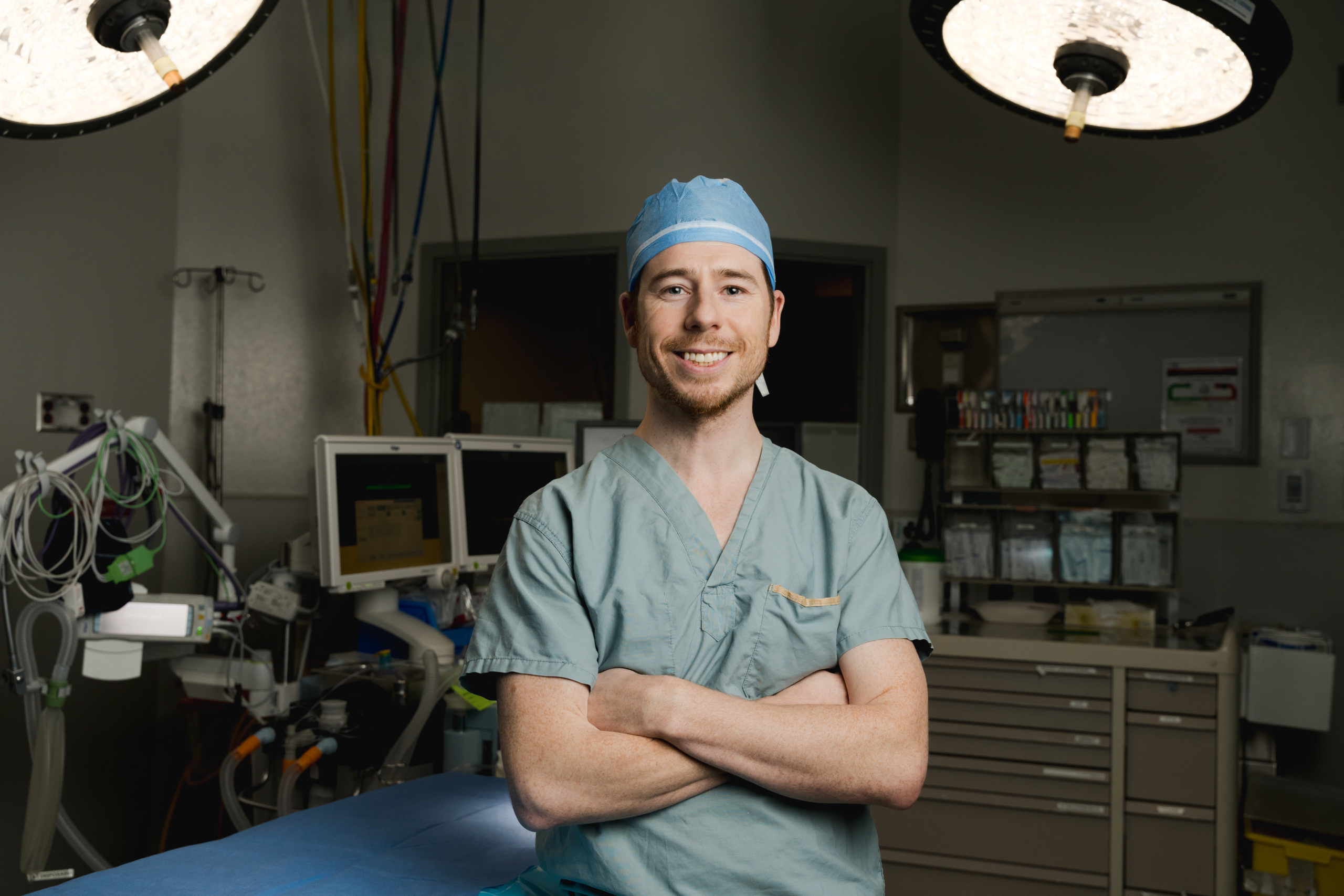Dr. Gregory Hosier joined the urology team at Royal Jubilee and Victoria General hospitals this past August. Dr. Hosier has subspecialty training in endourology and minimally-invasive surgery and is excited to offer new procedures and expand upon existing procedures to help improve the lives of patients on Vancouver Island:
 I was excited to join the urology group in Victoria because of the collegial nature of the group, balanced with a strong focus on delivering the most up to date surgical care for patients. There is a strong sense of community throughout our hospitals that is invigorating. I have been extremely touched to see the outpouring of support from our generous donors for transformative surgical equipment. The donor community is truly unique in Victoria and has helped the hospitals here keep pace with the largest and most advanced hospitals in the world.
I was excited to join the urology group in Victoria because of the collegial nature of the group, balanced with a strong focus on delivering the most up to date surgical care for patients. There is a strong sense of community throughout our hospitals that is invigorating. I have been extremely touched to see the outpouring of support from our generous donors for transformative surgical equipment. The donor community is truly unique in Victoria and has helped the hospitals here keep pace with the largest and most advanced hospitals in the world.
Along with the da Vinci surgical robot, there are a number of key pieces of surgical equipment being supported through the It’s Time for Surgical Innovation campaign that will allow us to transform care for the patients of Vancouver Island. I would like to take some time to focus on some of these initiatives.
One of the procedures we are introducing to Victoria is called holmium laser enucleation of the prostate (HoLEP). This is a minimally invasive surgery that helps patients with enlarged prostates, which is a common condition that happens to half of men over age 60. Enlarged prostates can cause issues with urination, and at times the need for catheters. HoLEP allows us to remove a large amount of prostate tissue without the need for skin incisions. In this procedure, a camera is advanced into the urethra and a laser is used to carefully separate the prostate tissue from the prostate capsule. The prostate tissue is then pushed into the bladder where a special device called a morcellator is used to fragment the tissue into small pieces that are then suctioned out the urethra. Although this procedure can be done for any size prostate, the biggest benefit is for men with very large prostates (over 80 g) who were previously referred off Island for HoLEP or would undergo a more invasive surgery locally.
With the more invasive approach, there is a hospital stay of 3-5 days with the need for a catheter for 5-14 days, and a risk of blood transfusion of 10-30%. HoLEP is giving our patients the chance to go home the same day of surgery, with a catheter coming out within 24 hours, and a blood transfusion rate of less than 1%. This procedure would not be possible without the support of donors who have provided funding for the morcellator. At the time of writing this, we have already started up HoLEP in Victoria and are on track to perform 70-100 surgeries this year.
To help keep up with demand and keep surgical waitlists short, a new laser is being funded through the It’s Time for Surgical Innovation campaign. The new laser can be used for both HoLEP and treatment of kidney stones. This technology allows us to perform these surgeries on average 20-25 minutes faster, which allows us to perform more surgical procedures each day.
Another procedure I am proud to expand on Vancouver Island is called percutaneous nephrolithotomy (PCNL). This is the preferred surgery for large kidney stones (>2 cm). Previously, patients with large kidney stones would require a urologist and interventional radiologist that would work in tandem using X-ray technology to find and break down the stones. In cases of more complex stones, patients would need to travel off-Island. Now, through a new ultrasound being funded through the It’s Time for Surgical Innovation campaign, we can perform the procedure here in Victoria, with less radiation, in less time, and without the need of another highly specialized physician.
That same ultrasound will allow us to introduce transperineal prostate biopsy to our operating rooms. A patient with an abnormal prostate exam or blood test will often need a biopsy to check for prostate cancer. Currently, most prostate biopsies are done through the rectum, which can introduce infection as the needle passes through a contaminated area. With transperineal biopsy, we will be passing the biopsy needle through the perineal skin and into the prostate, which can decrease risk of infection. This means we are able to perform prostate biopsies with a lower risk of severe infection like sepsis.
I would like to give a heartfelt thanks to all the donors—past and future— to the It’s Time for Surgical Innovation campaign. Without the support of donors funding novel surgical equipment, it would take years to introduce these best-in-class procedures. Starting up these new initiatives would not be possible without our community, or without the support from all the other hospital staff, from nurses and anesthesiologists to managers and equipment processors. Being a part of this revolution in surgical care on the Island is sensational, and seeing this new community of mine unite with us is extremely impressive. It makes me proud to be a Victorian today.
―Dr. Gregory Hosier
Urologist, Royal Jubilee and Victoria General hospitals




